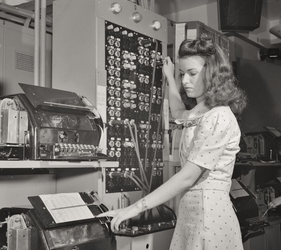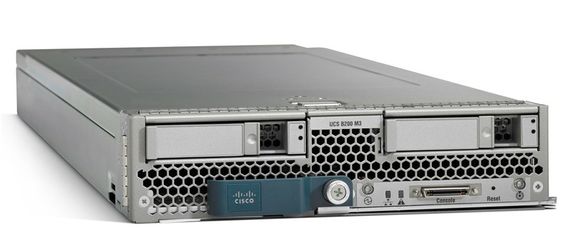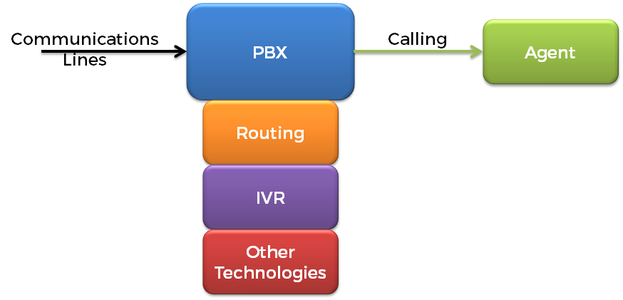Scenario - bxp and understanding phone systems
From All n One's bxp software Wixi
Contents
1 Introduction
A phone system is no longer just a phone system unfortunately, there are a host of choices. Most of the change is fuelled by the Internet and cheaper ways of communicating internationally.
A phone system can be broken up into general components as follows.
2 Elements
2.1 Communications Lines
The first part is how many phone lines go into the system. There are many types for different volumes.
2.1.1 PSTN
Packet Switched Telephone Network. This is a standard phone line. It uses voice tones to deliver the call. One line, one number.
2.1.2 BRI ISDN
Basic Rate Interface Integrated Services Digital Network. This is a digital line. One line one number.
It is also possible to get Dual ISDN, which gives you two lines per connection. Two lines two numbers.
2.1.3 PRI ISDN
Prime Rate Interface Integrated Services Digital Network. This is a digital line. It contains 32 "channels" on a single connection. 2 are control channels and 30 are lines which can be used for conversations. When you have these channels used for voice, that allows 30 simultaneous calls in and out.
A PRI in Ireland will come with 100 virtual numbers.
PRIs are costly. There is a slightly cheaper option. The cable into the premises is the same but the phone supplier limits the usable channels to 16 instead of 30. This is called FRA or Fractional Rate Access.
The connection in technical terms is called an E1 (in Europe) or a T1 (in America)
2.1.4 Broadband
Phone calls can also be transmitted over an Internet connection. This technology is called VoIP. Voice over Internet Protocol. https://www.youtube.com/watch?v=2x3Ie6VZ_sg
A phone call can use tiny amounts of data. A good rule of thumb is 100kb up and down. Up means going from your premises to the internet. Down means coming into your premises. Not all broadband has equal up and down. It is important to check. So a 1Mb up and 1Mb down, should theoretically hand 10 simultaneous calls (10 x 100Kb).
To convert a phone call from the traditional PSTN network to a data connection requires an interface called a SIP trunk. Session Initiation Protocol. https://www.youtube.com/watch?v=n9cT1Lq9Lg8
2.2 PBX
2.2.1 Introduction
So now we have some communication lines to bring in external conversations.
The traditional approach was to just handle phone calls. With the advent of data it has opened up the technology to also accept a number of other technologies such as email, livechat through websites and others. More on this below
When the call comes in, we need everyone in the business to be connected and ready to chat. A PBX or Public Branch Exchange is required. Previously these were called a Phone System. The new name is a Unified Communications Platform where it does more than just phone calls.
The name is an evolution from manual switching, through electronic switching to modern server computers.
| Manual | Electronic | Server |
|---|---|---|

|

|

|
2.2.2 Manufacturers
There are a number of major phone system suppliers. These specialise in traditional PBX building:
- Avaya
- Nortel (bought by Avaya)
- Cisco
- Panasonic
- LG Ericsson
- Samsung
There are also now a number of software based solutions, which can be run on any server. The first free one of these is Asterix upon which many of the others are based.
- Asterix http://www.asterisk.org/
- 3CX http://www.3cx.com/
There are many other solutions
It is also possible to have your entire phone system hosted for you and you log in over the internet. This can represent a massive up front cost saving (Captial Expenditure - Capex) and turn it into an ongoing rental cost (Operating Expenditure - Opex).
2.3 Routing
The first and primary function of the PBX is routing. This is getting an incoming contact to be connected to someone who can do something about it.
The simplest of routing can be to just ring every phone in the office till someone picks up.
More complicated routing can lead to better solutions. There are various routing options available which depend on the capability of the PBX. Examples:
http://www.3cx.com/docs/call-queues/
- Longest Waiting Time– Will forward a call to the agent who has been waiting the longest to take a call.
- Least Talk Time – Will forward the call to the agent with the least total talk time.
- Fewest Answered – Will forward the call to the agent that has answered the least number of calls.
- Hunt by threes prioritized – Will forward the call to the top 3 agents (as configured in the call queue agent section simultaneously).
- Hunt by threes random start – Will send call to 3 random agents simultaneously.
- Round Robin – Will target only active agents, that are logged into the queue, in round robin manner, i.e. first call will be sent to agent 1, the second call to agent 2 and so on.
2.4 IVR
Interactive Voice Response, is the type of system people are used to hearing in big organisations. When you ring through you get "Press 1 for X, Press 2 for Y and so on....". This added intelligence allows for even more intelligent routing strategies.
IVR has further evolved to be able to capture more and more data. This data can then used in more and more automated and intelligent ways. Some solutions can even be supplied without ever having to deliver the call to an agent. This is generally an approach used by the larger organisations with hundreds of calls to handle.
There are a host of suppliers in this arena, but most are available from the original phone supplier themselves.
2.5 Other Technologies
There are further bolt ons and add ons available which can interact with IVR. These technologies allow for complicated automation of tasks. Such as voice analytics for automatically grading and quality assuring contacts. These solutions can be very expensive to purchase but represent massive cost savings for organisations where traditionally people had to perform these tasks manually.
2.6 Calling
So once the communications have brought in a contact, the PBX and it's associated routing tools have decided to deliver the call there are a number of technologies and connections to get the call to the desk of the person.
Using tradition RJ11 cabling delivers the calls in the same way an external phone call is delivered to your premises via PSTN.
The more effective way is to put the information as digital information over a network cable such as an RJ45 cable.
With data it is also possible to deliver that data over WiFi within the office.
2.7 Agent
The final part of the puzzle.
A hard phone is a physical phone which is on the desk. This is what most users are used to seeing in an office. Phones can appear to be traditional phones using RJ11, but modern hard phones can use RJ45 as well.
The more adopted solution is to use a soft phone. The soft phone is a piece of software which runs on the computer. The agent uses a headset with a microphone and uses the software.
It is possible to split the two. Have a physical hard phone and a softphone. This is often seen with companies transitioning from traditional PBXs to more modern solutions. The phone rings, but the soft phone receives details simultaneously from the PBX.
A soft phone has the ability to react as a call is coming in. When it detects a call coming in, it can, in most cases, automatically cause a program to open. This is known as Computer Telephony Integration (CTI).
3 Integrating bxp with a phone system
In order to integrate bxp with a solution, a soft phone solution must be in place. As the call arrives at the soft phone, an Internet browser is popped open with a specific URL. This specific URL logs the user in, knows which campaign to go to and can also look up a record.
If IVR additional information can be appended into the opened URL, even more intelligent routing can be achieved and accepted by bxp.
For a full article on this subject Scenario_-_bxp_Integration_with_a_Phone_System
4 PBX Suppliers in Ireland
All n One have worked with a number of telephony suppliers in Ireland who operate at various levels.
Physical
- FCS (Flexible Contact Solutions) http://www.fcs-global.com/contact
- Capstone http://www.capstoneconnects.com/
- Eircom Business Systems https://business.eircom.net/product/small-medium-business-telephone-systems/
- Phonelink http://www.phonelink.ie/
Hosted solutions
- Intellicom http://www.intellicom.io/
- Magnet https://www.magnet.ie/business/services/magnet-voice
- Vodafone http://www.vodafone.ie/small-business/phones-plans/one-net-express/
- Content Guru http://www.contentguru.com/
- SystemNet http://www.systemnet.ie/
- Webcore Cloud https://www.webcorecloud.com
- Clear Connetions http://clearconnections.ie/clearconnections/
A complete list of all telecoms service providers can be found here
http://www.askcomreg.ie/erau/search_result.0.0.fnbOtfqzUfdjwsfT.DTFE.erauresults.LE.asp




